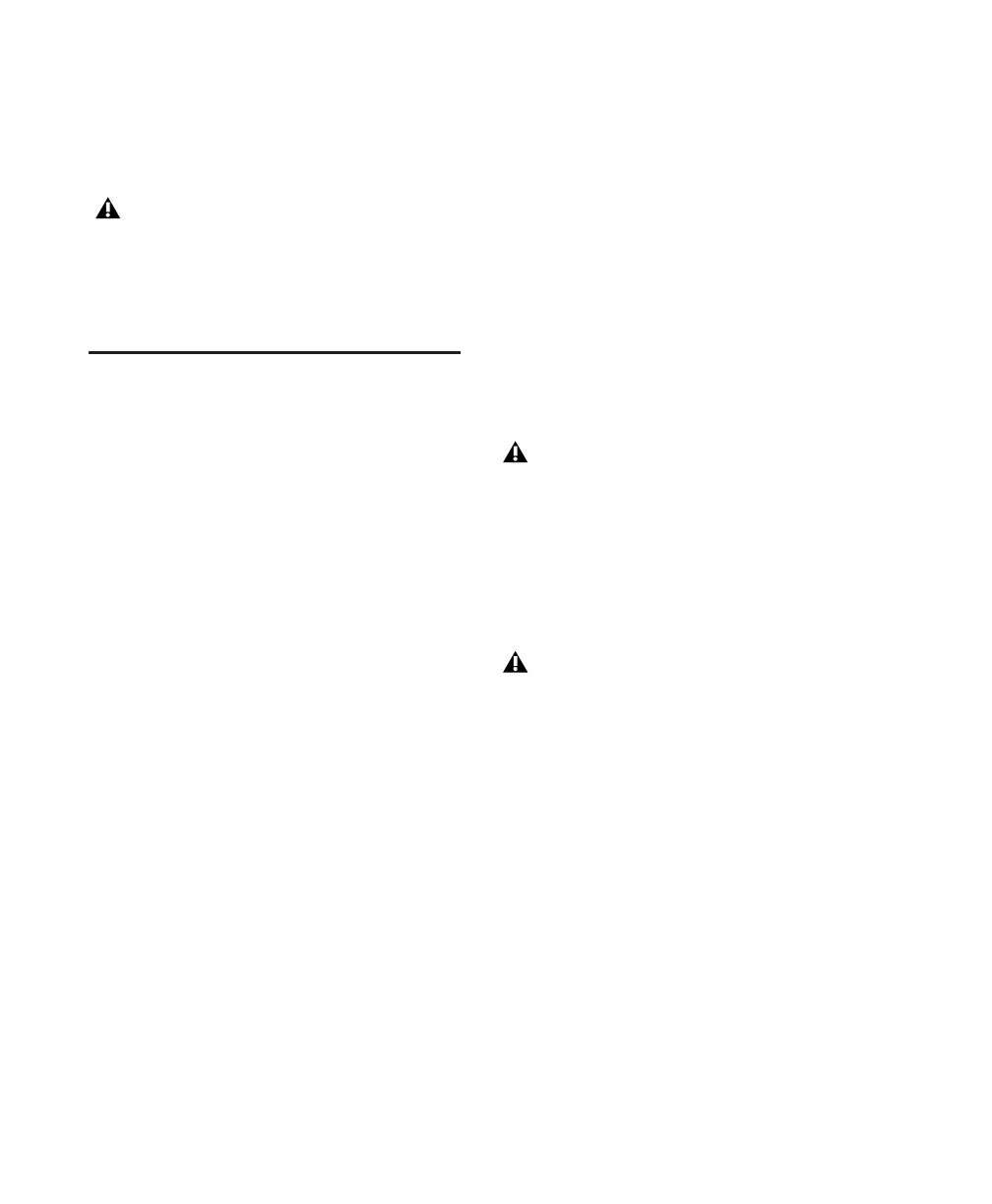Pro Tools Reference Guide546
Bar|Beat Markers. These Bar|Beat Markers can
then be used to quantize other audio regions or
MIDI tracks, thereby conforming to the Bar|Beat
Markers generated by Beat Detective.
DigiGroove Templates
Beat Detective allows the fine timing nuances of
a rhythmic performance to be extracted and
saved as a groove template, called a DigiGroove
template. DigiGrooves can be saved locally to
the Groove Clipboard, or saved to disk as Digi-
Grooves.
Groove templates can be used to transfer the feel
of a particular performance to:
• Selected audio regions using Groove Conform
(see “Groove Conform” on page 551).
• Selected MIDI data using Groove Quantize
(see “Groove Quantize” on page 589).
Groove templates are “quantization maps” de-
rived from real musical performances. The
rhythmic character of each performance is ana-
lyzed and stored as a groove template. Beat De-
tective analyzes an audio selection for transient
peaks according to a defined threshold and
maps the rhythmic relationships to a 960 parts
per quarter note (ppq) template.
When creating DigiGroove templates, Beat De-
tective also analyzes the dynamics of a perfor-
mance. MIDI velocity data is saved from MIDI
tracks, and accents and peak levels in audio data
are incorporated into the groove template as ve-
locity data, which can be applied to change the
dynamics of MIDI tracks.
Beat Detective translates the amplitude of sig-
nals in audio tracks to MIDI velocity according
to a linear scale. For example:
• A 0 dBFS signal equals a MIDI velocity of
127.
• A signal at –6 dBFS equals a MIDI velocity
of 64.
• A signal at –12 dBFS equals a MIDI velocity
of 32.
• A –48 dBFS equals a MIDI velocity of 1.
Capturing this information is very important to
preserving the feel of a performance, and can
add life to MIDI tracks that lack dynamics.
To extract a Groove Template:
1 In the Edit window, make an audio or MIDI se-
lection. The selection should consist of one or
more complete bars, starting and ending on
downbeats.
2 In the Beat Detective window, select Groove
Template Extraction mode.
3 Define or capture the selection as described in
“Defining a Beat Detective Selection” on
page 538.
4 Configure the Detection options so the selec-
tion’s peak transients are accurately detected
(see “Generating Beat Triggers” on page 540).
5 Click the Extract button.
When quantizing regions or MIDI notes to
Bar|Beat Markers on sub-beats that repre-
sent a swing feel, make sure to use a
straight quantize value (with the Swing op-
tion for Quantize disabled).
Beat Detective only captures duration data
from MIDI tracks, not from audio tracks.
When extracting Groove Templates, the
captured selection must not include
Bar|Beat Markers. Otherwise, the accuracy
of the Groove Template will be compro-
mised.

